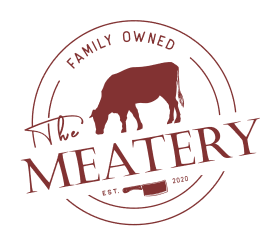A5 Wagyu represents the pinnacle of beef quality, synonymous with luxury and exclusivity. Less than 1% of all Japanese beef qualifies as A5, indicating flawless scores across marbling, color, texture, and overall quality.
Several factors contribute to A5 Wagyu’s exclusivity:
-
Strict genetic lineage control
-
Intensive, meticulous raising methods
-
Limited production capacity
-
Stringent grading standards
The pricing of A5 Wagyu, which can reach several hundred dollars per pound, reflects its rarity and extensive production costs. Each Wagyu animal is traceable via unique identification numbers, ensuring complete transparency and authenticity. For genuine A5 Wagyu, always source from trusted providers such as TheMeatery.com.
Is Wagyu Beef Just Fat?
Japanese Wagyu is far more than just fatty beef—it's a sophisticated blend of intramuscular fat marbling and premium muscle tissue that creates its legendary texture and flavor. The distinctive marbling pattern, called "shimofuri," consists of fine flecks of fat dispersed evenly through the meat, uniquely attributed to Wagyu genetics.
What truly distinguishes Wagyu is its type and distribution of fat. Regular beef typically exhibits thick outer fat layers, whereas Wagyu's fat is intramuscular, resulting in intricate, web-like patterns. This marbling contains high concentrations of monounsaturated fatty acids, which have lower melting points than conventional beef fat, causing the meat to literally melt in your mouth.
Moreover, Wagyu beef's muscle fibers are finer and more tender than those of conventional cattle, enhancing its renowned buttery texture. Careful breeding practices and specialized rearing methods create an optimal balance between meat and marbling, highlighting rather than overpowering the beef’s natural flavors.
Why is Wagyu Healthy?
Despite its luxurious appearance and rich marbling, Japanese Wagyu boasts numerous health benefits due to its distinctive nutritional composition. Key health advantages include:
-
Higher concentrations of omega-3 and omega-6 fatty acids
-
Greater presence of monounsaturated fats compared to saturated fats
-
Abundant conjugated linoleic acid (CLA)
-
Essential amino acids and minerals like iron, zinc, and B-vitamins
Studies suggest the unique fat composition in Wagyu beef aids in reducing inflammation, lowering cholesterol, and promoting heart health. The high concentration of oleic acid, similar to that found in olive oil, enhances cardiovascular health and overall well-being, challenging the common misconception that marbled beef is inherently unhealthy. As well, with notably higher levels of monounsaturated fats (up to 400% greater than regular beef), omega fatty acids, and conjugated linoleic acid, Wagyu supports numerous health aspects, particularly cardiovascular and metabolic health.
Integrating Wagyu into a Healthy Diet
Japanese Wagyu fits comfortably within a balanced diet when consumed mindfully. Its nutritional richness means smaller portions provide both satisfaction and substantial nutrient value. Pairing Wagyu with vegetables, whole grains, or healthy fats like avocado further balances meals, maximizing nutritional benefits without excess calorie intake!
Understanding Wagyu Feeding Practices
The meticulously planned diet of Wagyu cattle significantly influences meat quality. Traditional Wagyu diets typically feature:
-
High-quality rice straw
-
Customized grain mixes, including wheat, barley, and corn
-
Consistent access to clean, fresh water
The cattle’s diet undergoes precise adjustments throughout their lifespan, particularly during the extensive finishing phase lasting 600 days or more. This carefully regulated diet ensures optimal fat development and marbling distribution. Additionally, feeding schedules are precisely timed, maintaining consistent weight gain and health.
Wagyu Production Process: From Farm to Table
Producing authentic Japanese Wagyu is a meticulous, years-long endeavor involving multiple carefully executed stages:
-
Breeding: Strictly controlled genetic selection ensures superior lineage.
-
Calf Raising: Calves receive detailed care and monitoring immediately after birth.
-
Growing Phase: Controlled diets and limited physical activity to maintain quality.
-
Finishing Period: Intensive feeding for premium fat marbling and flavor enhancement.
Stress management is paramount throughout production, as stress negatively impacts meat quality. Producers often employ practices like massages and brushing, believed to improve circulation and fat distribution, enhancing meat quality further.
Exploring the Japanese Wagyu Grading System
Japan’s Wagyu grading system, globally recognized for precision, evaluates beef quality through multiple criteria:
-
Yield Grade: Rated from A (highest yield) to C.
-
Quality Grade: Ranked numerically from 1 to 5, assessing overall beef excellence.
-
Marbling Score: Measured on a scale of 1 to 12.
-
Meat Color and Brightness: Evaluated on a scale of 1 (darkest) to 7 (brightest).
-
Fat Color and Quality: Also rated 1 to 7.
The coveted A5 Wagyu grade demands perfect yield (A) and quality (5) scores. Achieving A5 involves meeting exceptional standards across all categories, including achieving a marbling score of at least 8 out of 12.
Sourcing and Enjoying Wagyu Responsibly
Japanese Wagyu beef transcends mere culinary luxury; it’s an art form resulting from generations of meticulous practice and dedication. Purchasing Wagyu from reputable providers ensures authenticity and ethical production. Sites like TheMeatery.com offer verified Wagyu selections, ensuring consumers receive genuine, high-quality products!









